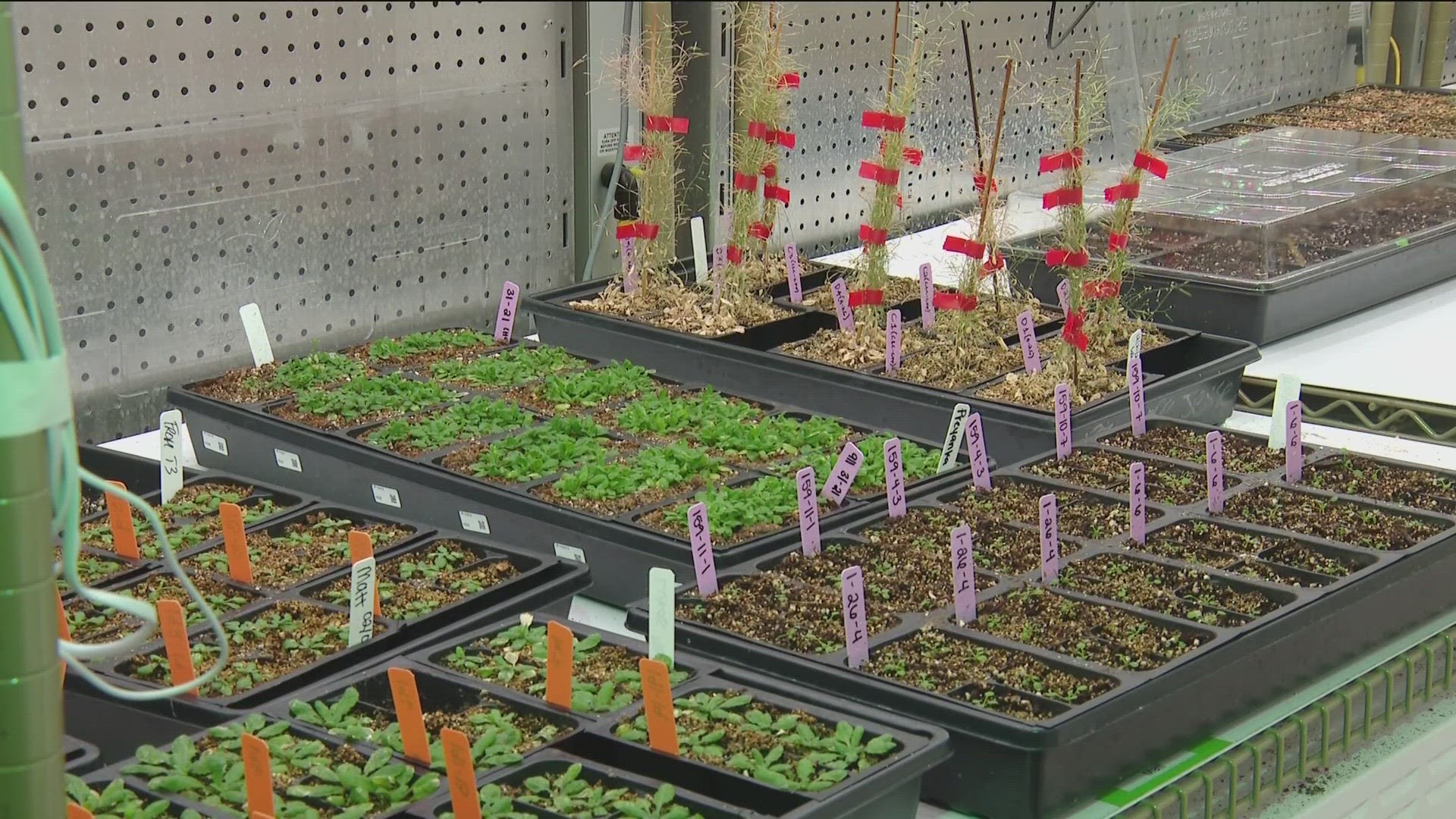SAN DIEGO — Iron is an important mineral for human and plant health. New data is sprouting up on how iron influences a plant's immunity.
Scientists at the Salk Institute in La Jolla have started to develop growing amounts of research on this topic — information that could also help in understanding plant resiliency against climate change.
"When plants are iron deficient, they produce a molecule and that is called Iron Man. And Iron Man, also abbreviated as IMA1, tells all the cells in the plant that they have to save iron," explained Wolfgang Busch, Ph.D., Professor at the Salk Institute for Biological Studies.
Wolfgang's explanation might sound like something out of the Marvel Universe, but we're not talking about that Iron Man. IMA1 or Iron Man is a molecular signal for iron deficiency in plants. Just like in humans, iron is an important mineral for growth and development.
"Plants need iron for basically almost everything they do. When they are lush and green, they have a lot of iron that enables their photosynthesis. So, the ability to capture CO2 from the air, harness the sunlight and make biomaterials and grow with that and produce all the great stuff that we use food, feed and fiber," said Busch.
Research has shown plants actually develop stronger symptoms of iron deficiency, or low iron levels, when they are exposed to "bad" bacteria at the same time. This includes fungi and disease-causing viruses. This is their way of defending themselves. This reaction actually came as a surprise when this research started about three years ago. Scientists, including Wolfgang Busch, at the Salk Institute thought that plants might respond differently.
"Initially we thought they would actually get more iron and have more iron available when they were exposed to these microbial molecules, but they did the opposite, and that was the start of a fascinating story," stated Busch.
Busch explained this new finding even further by using color-coded images showing this reaction in a plant root.
"This is the iron deficiency. Plants are mining like crazy and that is indicated by a lot of this green signal. And then, when we do the same iron deficiency and add this bacteria molecule, we don't see a lot of green signals like the previous one. So plants shut down their own mining activity here because there is no green signal when they also have a lot of this bacteria molecule," explained Busch.
It was also found that more IMA1 in leaves make them move resistant to bacterial attacks and improve their immunity.
"Iron Man and these mechanisms are conserved in most plant species that have agricultural relevance. So, in order to continue to produce the years, we produce today with all the different crops, ranging from soybeans to lettuce, we might want to enhance these processes and the ability to fend off pathogens," said Busch.
This "bad" bacteria is one of the stresses plants will continue to fight due to the emergence of more pathogens that could migrate from warmer regions. This research could be a major help when it comes to a plant's resiliency as our planet changes.
"And so iron and Iron Man might play an important role for this. By understanding this mechanism, we will be able to design plants that have a better ability to fend off pathogens that get more frequent with ongoing climate change," said Busch.
WATCH RELATED: Salk Institute and its efforts to make plants able to cope with climate change (Nov. 7, 2022)

